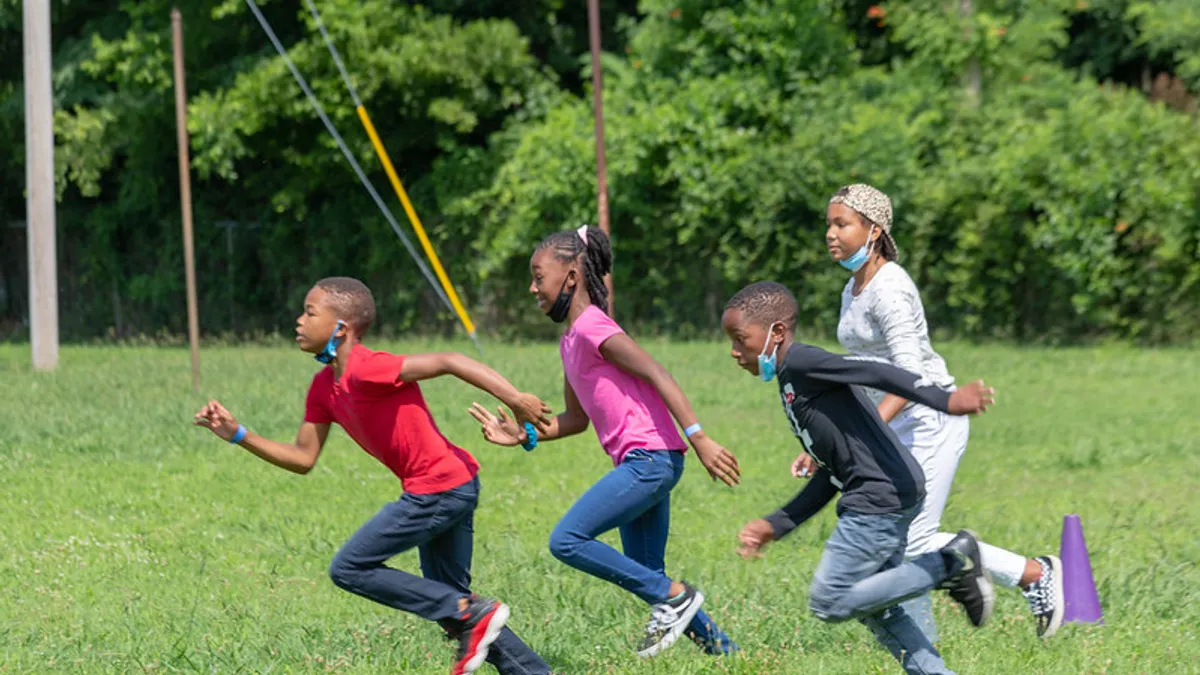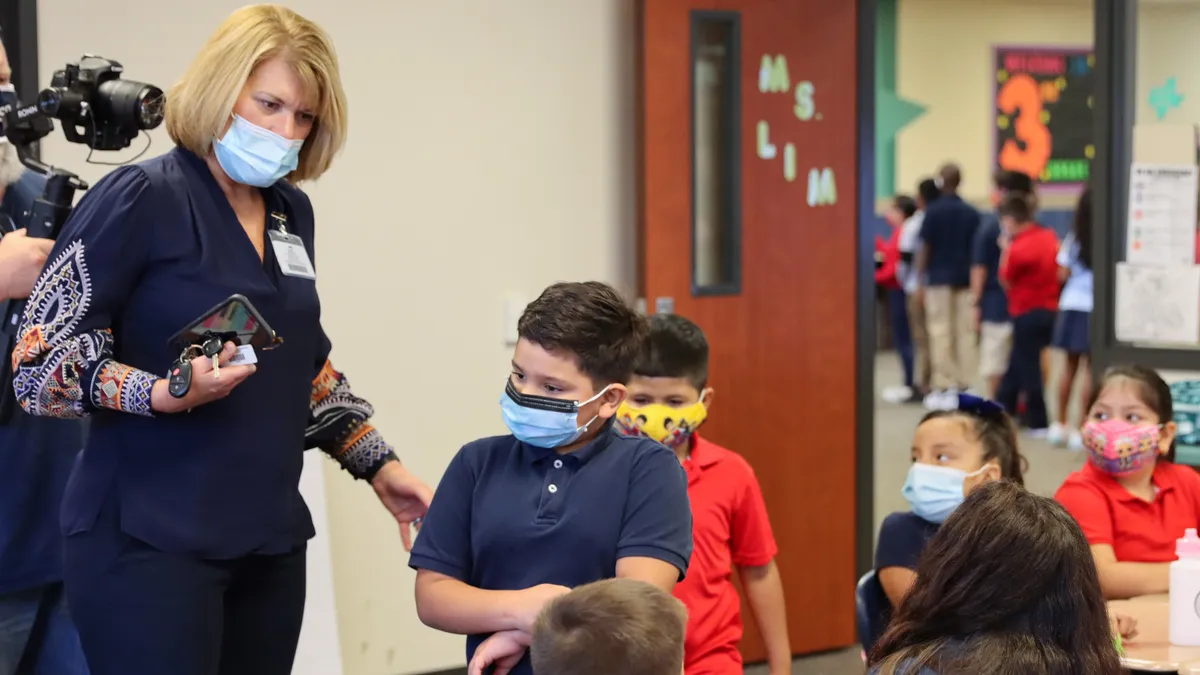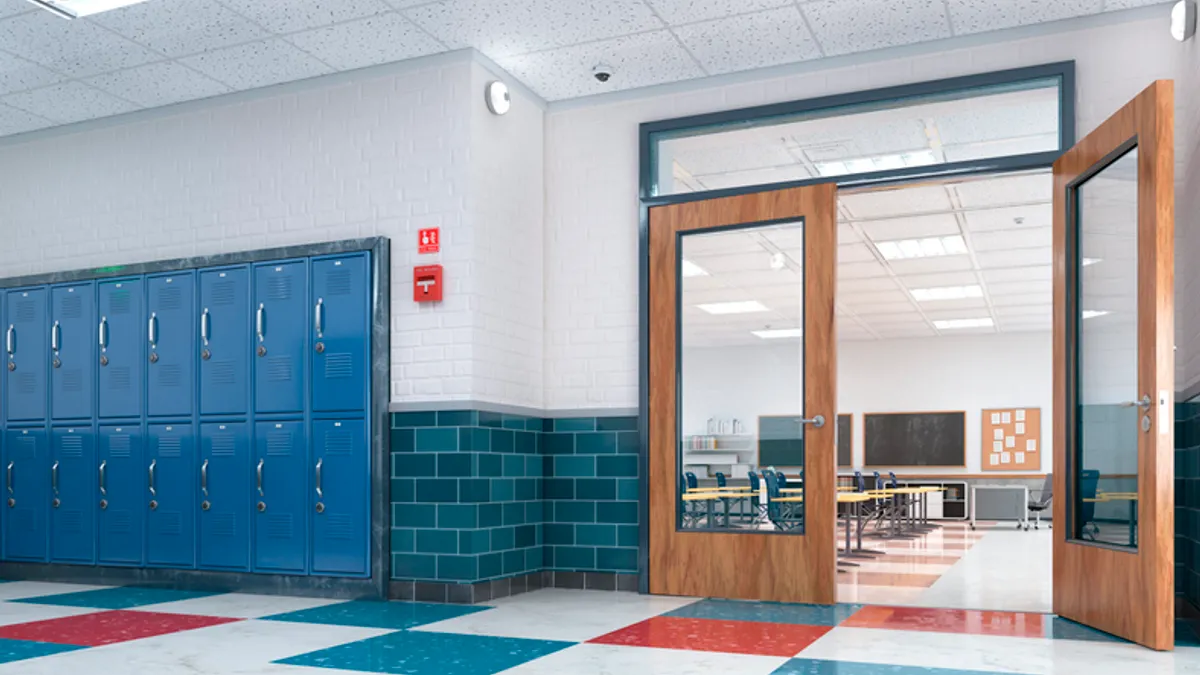A 2018 teacher walkout and a global pandemic caused officials in Oklahoma's Tulsa Public Schools to build a comprehensive summer learning program the district hopes will be even stronger this summer based on lessons learned from last year's programming.
The school closures caused by COVID-19 and the 2018 walkout for higher pay and more investment in public education led officials in the 33,000-student district to work more closely with community partners to create nontraditional learning spaces and activities, said Paula Shannon, deputy superintendent of schools.
Those experiences also made the district think more intentionally about providing equitable access to summer opportunities for students and staff, she said.
"Summer is a space in which we can try new ideas, approaches and deploy resources a bit differently to find what helps us best reach our collective goal."

Paula Shannon
Deputy superintendent of schools for Tulsa Public Schools
Now, as the district looks ahead to summer 2022, it is also guided by lessons learned from its robust 2021 programming that contributed to academic gains.
Students who participated in "Ready. Set. Summer!" showed a 3% increase in grade-level reading proficiency on NWEA MAP Growth assessments and a 1% increase in proficiency on the math assessments from spring to fall 2021 testing.
For students who did not participate in the summer learning program, there was just a 1% increase in reading proficiency from spring to fall 2021 and a 1% decrease in math proficiency, Shannon said.
The Tulsa district, like many others nationwide, is using the infusion of federal relief funding to help fuel summer planning. It plans to spend $8.5-$9 million of its Elementary and Secondary School Emergency Relief fund for this summer's programming.
"Summer is a space in which we can try new ideas, approaches and deploy resources a bit differently to find what helps us best reach our collective goal," Shannon said. "And that's ensuring that all of our young people in Tulsa have access to opportunities that are important to them, no matter their background or zip code."
Adjustments for 2022
Shannon said the summer program is not "summer school" in the traditional sense, although middle and high school students will have credit recovery opportunities. Rising 4th graders who have not met reading benchmarks will be encouraged to participate to help them progress.
Instead, the focus is, like last summer, bringing students together and providing a wide range of hands-on, experiential learning opportunities. Although the options are still being finalized, some activities include field trips around the city, gardening and robotics, Shannon said.
And as in summer 2021, organizers are giving teachers freedom to pitch ideas for activities. Last summer, for example, a teacher taught children how to juggle and another created a sword fighting club.
About 11,000 students in pre-K-12 enrolled in Ready. Set. Summer! last year at 75 sites. Participation is voluntary. This year, the district is targeting a 10,000-student enrollment and an 80% or higher average daily attendance rate for participants, Shannon said.
The district is reducing the number of program sites after realizing last summer's variability in scheduling — some were half days or a few days a week, while others were full time — created burdens for families and staff.
Instead, this summer, schools will partner with three or four other schools to host a joint summer program at one school. This way, there will be a consistent 4-week, 5-days-a-week, 7- to 8-hours-a-day schedule at all the summer sites, Shannon said.
Another change is that, this summer, teachers can customize their schedule to work certain days or times. For example, a teacher could request mornings only, while another might prefer full days Monday-Wednesday.
Shannon acknowledged the difficulty of organizing different payroll schedules but said the district wanted seamless support for learners, educators and community partners. "We're trying to be very flexible on that front," she said.
The changes to this year's programming were influenced by the results of surveys of parents, students and staff who participated in the 2021 programming, Shannon said.
Because Tulsa Public Schools' summer learning program is only available for four weeks, the district works in partnerships with Tulsa's Opportunity Project, a nonprofit that collaborates with area nonprofits, faith-based groups, government agencies and others to provide accessible youth activities year-round, including summer programming for when Ready. Set. Summer! is not available.
"We were very excited about learning from last summer," said Shannon. "I think that we approached our summer experience as an opportunity to really build back more boldly and more equitably."
Making summer programming indispensable
Like the Tulsa district, many school systems are building summer programs that never seemed possible before the federal relief dollars. An analysis of ESSER spending in 3,200 school districts shows more than half are spending relief dollars on expanded learning, including summer programming, according to FutureEd.
ESSER has provided the largest allocation ever — $30 billion — of federal money dedicated to after-school, summer school and other expanded learning programs, said Aaron Philip Dworkin, CEO of the National Summer Learning Association. In comparison, the federal allocation for 21st Century Community Learning Centers, a grant program for enrichment activities during nonschool hours, was $1.25 billion in FY 2021.
Dworkin said the NSLA phone has been "ringing off the hook" since the pandemic began, with school districts and other organizations seeking advice on building and maintaining quality programs during nonschool hours to support students' academic and social and emotional needs.
NSLA has resources to help with summer planning and is also hosting a Summer Planning Bootcamp webinar series March 30-31.
Federal relief funding combined with the momentum to form community partnerships has contributed to an array of creative summer youth programming across the nation, Dworkin said. Organizations are also being more intentional in considering teachers' needs and desires as they organize summer programming amid a national teacher shortage crisis.
Dworkin has heard concerns about an inability to maintain robust summer youth offerings once ESSER funding runs out. His advice: Focus on providing valuable and indispensable programs now.
If the infrastructure is in place for high-quality and equitable summer programs, then corporations, governments and other funders should want to contribute to their continuing success, he said.
"If everyone in America, especially our local families, were having a high-quality summer learning program that was valuable ... it should be very hard to say we are now doing away with that," Dworkin said





















